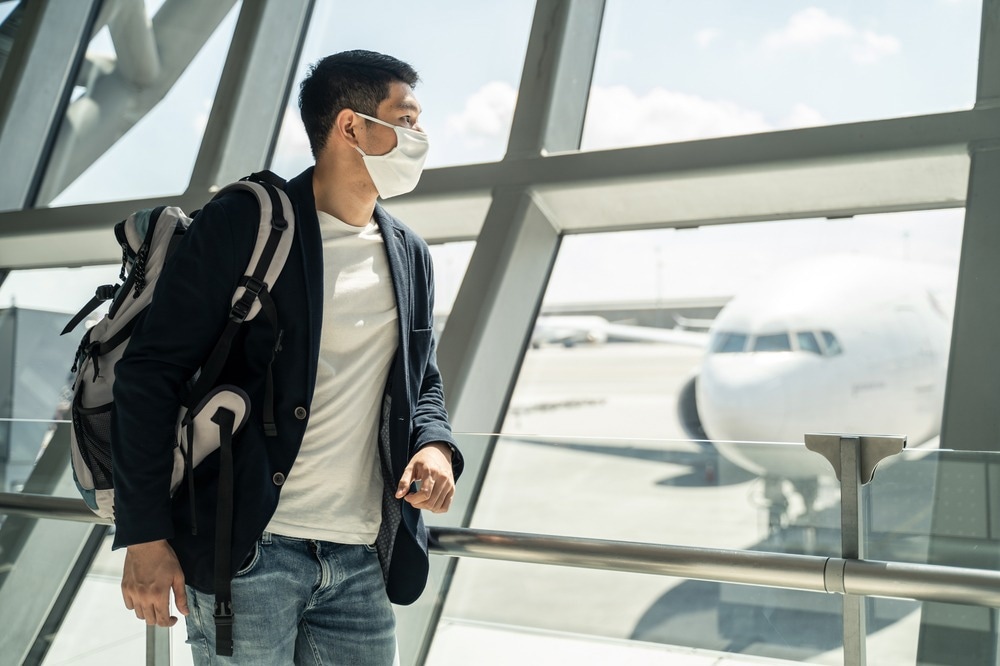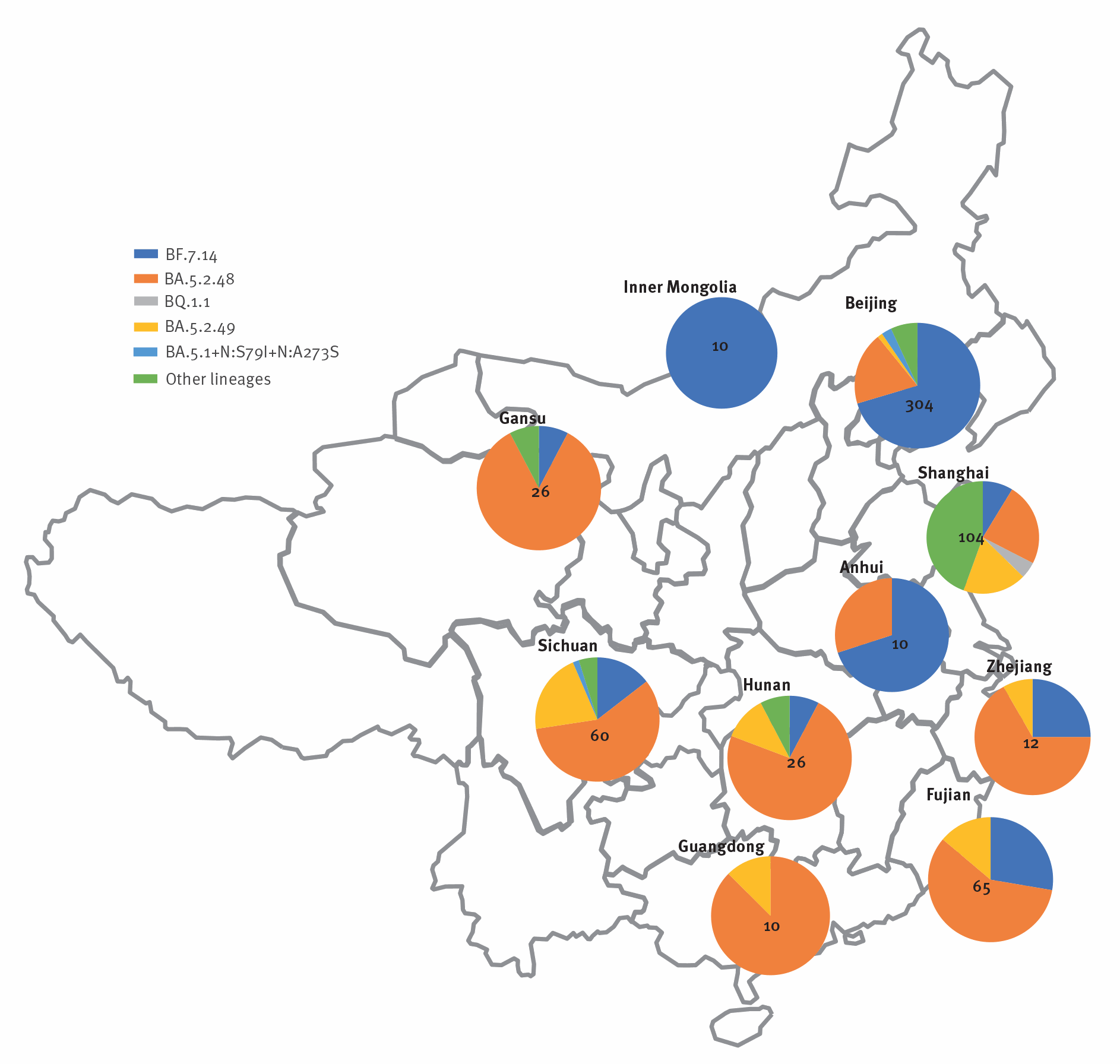Infection with the severe acute respiratory syndrome coronavirus 2 (SARS-CoV-2), the causal agent of the coronavirus disease 2019 (COVID-19), has claimed more than 6.72 million lives worldwide. Towards the end of 2022, the number of COVID-19 cases increased significantly in China, which led many countries to increase testing and genomic surveillance.

Study: Genomic surveillance of SARS-CoV-2 positive passengers on flights from China to Italy, December 2022. Image Credit: Hananeko_Studio / Shutterstock.com
The current study
China relaxed its 'zero-COVID' policies in September 2022, significantly increasing COVID-19 cases. As a result, recent estimates indicate that the proportion of the Chinese population infected since November 1, 2022, known as the attack rate, was 43.1% and rose to 75.7% by December 22, 2022.
Owing to this rise in case numbers, many countries now require a negative SARS-CoV-2 test from passengers arriving from mainland China. Additionally, some countries are testing incoming passengers and conducting genomic surveillance of travelers to monitor emerging SARS-CoV-2 variants.
In the current study, researchers document the results of screening conducted in Italy between December 26-29, 2022. Moreover, a total of 556 passengers from China arriving at Fiumicino Leonardo da Vinci airport in Rome and Malpensa airport in Milan were screened.
 Geographic distribution by province of Omicron a sub-lineages among sequences with case date after 1 September 2022 deposited from China in GISAID as of 11 January 2023 (n = 627 sequences) an Omicron (Phylogenetic Assignment of Named Global Outbreak (Pango) lineage B.1.1.529). b In the respective metadata, the deposited sequences were not labeled as ‘imported.’ Other lineages include BA.5.2 (n = 9), BF.21 (n = 3), BF.7 (n =1), BA.5.1 (n = 8)in Beijing, BA.2 (n = 4), BA.5 (n = 1), BA.5.1 (n = 1), BA.5.2.1 (n = 4), other BA.5.2.* (n = 34), BE.1.4.2 (n = 1), BF.7 (n = 3), BQ.1 (n = 1), BQ.1.1 (n = 4), BQ.1.1.4 (n = 1), BQ.1.23 (n = 1), CH.1.1 (n = 1) in Shanghai, BA.5.2 in Gansu (n = 2), BA.5.2 in Huanan (n = 2), BA.5 (n = 1) and BA.5.2 (n = 1) in Guangdong, and BA.5.1 (n = 1) in Sichuan. The disks (pie charts) are subdivided according to the proportion of each sub-lineage found. The numbers at the centers of the disks represent the total number of characterized viral sequences originating from the provinces in question.
Geographic distribution by province of Omicron a sub-lineages among sequences with case date after 1 September 2022 deposited from China in GISAID as of 11 January 2023 (n = 627 sequences) an Omicron (Phylogenetic Assignment of Named Global Outbreak (Pango) lineage B.1.1.529). b In the respective metadata, the deposited sequences were not labeled as ‘imported.’ Other lineages include BA.5.2 (n = 9), BF.21 (n = 3), BF.7 (n =1), BA.5.1 (n = 8)in Beijing, BA.2 (n = 4), BA.5 (n = 1), BA.5.1 (n = 1), BA.5.2.1 (n = 4), other BA.5.2.* (n = 34), BE.1.4.2 (n = 1), BF.7 (n = 3), BQ.1 (n = 1), BQ.1.1 (n = 4), BQ.1.1.4 (n = 1), BQ.1.23 (n = 1), CH.1.1 (n = 1) in Shanghai, BA.5.2 in Gansu (n = 2), BA.5.2 in Huanan (n = 2), BA.5 (n = 1) and BA.5.2 (n = 1) in Guangdong, and BA.5.1 (n = 1) in Sichuan. The disks (pie charts) are subdivided according to the proportion of each sub-lineage found. The numbers at the centers of the disks represent the total number of characterized viral sequences originating from the provinces in question.
Key findings
Of the 556 screened passengers, 61 tested positive for SARS-CoV-2. Whole genome sequencing revealed Omicron variants, which included sub-lineages BA.5.2, BF.7, and BQ.1.1, each with additional mutations. This observation was in line with data released from China.
The BF.7.14 sub-lineage, which contains the BF.7 mutations in addition to ORF7a:H47Y and S:C1243F, requires particular attention. BF.7 is characterized by the S:R346T immune escape mutation, which makes it resistant to cilgavimab and tixagevimab and sensitive to bebtelovimab and convalescent plasma from vaccinees.
To date, COVID-19 waves have been driven by SARS-CoV-2 variants of concern (VOC) linked to significant changes in the spike protein's receptor binding domain (RBD). However, immune evasion is unlikely to be driven by mutations in the S2 subunit of the spike protein, such as C1243F.
ORF7a is an accessory cysteine-rich, zinc-binding type I transmembrane protein structurally conserved in various SARS-CoV-2 VOCs. An N-terminal signal sequence, an ectodomain with an immunoglobulin (Ig)-like fold, a short transmembrane domain, and a C-terminal cytoplasmic tail constitute the separate domains of ORF7a. Notably, ORF7a interacts with the major histocompatibility complex (MHC)-I heavy chain, potentially limiting cell-mediated immune responses.
The ORF7a:H47Y mutation was previously reported in Oceania and North America in 2020. More recently, this mutation was reported in the BF.5 lineage, which was dominant in Japan at the end of 2022. In addition, many other mutations, such as S44P in BA.5.11 and T61S in XAY, around the F59 position, have also recently emerged.
The BF.7 variant has been circulating in Inner Mongolia since September 2022 and in the United States and Europe since August 2022. The high prevalence of BF.7.14 in China is possibly due to the founder effect.
In China, the contribution of previous infection-elicited immunity is less relevant, which limits the ability of BQ.1* and XBB* to become dominant circulating strains in this nation.
Concluding remarks
The study findings emphasize the importance of genomic surveillance to detect the emergence of new SARS-CoV-2 variants that are replacing previously dominant circulating strains. Importantly, these findings are consistent with sequencing data recently released from China.
The current study has a few limitations that could be addressed in future research. For example, the sample size is small, and the clinical presentation could appear biased, as only asymptomatic or mildly infected patients are likely to embark on intercontinental flights and pass security checks. The study was also limited to flights originating in the East of China, a restriction that could be relaxed in the future.
Journal reference:
- Novazzi, F., Giombini, E., Rueca, M., et al. (2023) Genomic surveillance of SARS-CoV-2 positive passengers on flights from China to Italy, December 2022. Eurosurveillance 28(2). doi:10.2807/1560-7917.ES.2023.28.2.2300008.